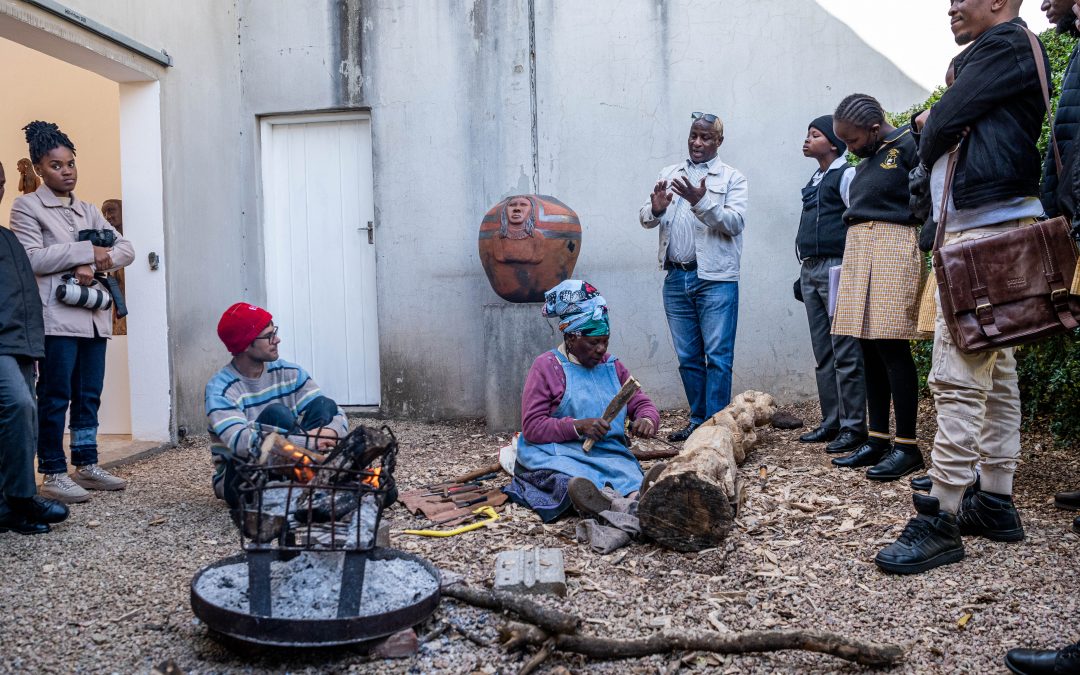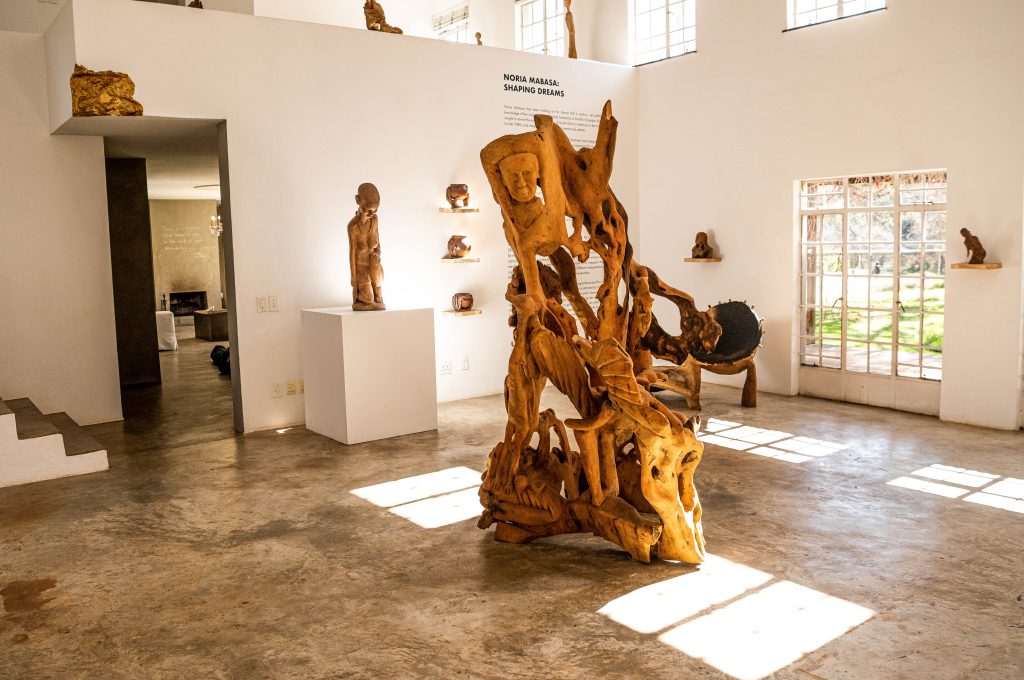The artistic skills of most African youth lay latent, awaiting a trigger.
So, amid the commemoration of Youth Month, it is apt to take an intensified note of the creative possibilities of the young ones. Such prospects could emerge from harnessing the deep-rooted ability of the youth to create.
On that account, encouraged observation and learning from the journey of arts from elders is essential to spark the youth’s hidden talent.
An inspiration standing tall and worthy of note among patriarchs is that of mama Noria Mabasa.
Forming part of her numerous achievements is that Mabasa is the recipient of the 2002 Silver category of the presidential Order of the Baobab. Also counted in her portfolio of works is the famous piece titled The Drum of Thunder, the masterpiece that sold for R150,000 during an auction in 2017.
Despite not having formal art training, the woodcarver who also creates with clay gained national and international recognition. Numerous artworks of hers have been exhibited extensively and occupy space in several private, corporate, and public collections.
Recently, Mabasa completed a residency and exhibition at NIROX Sculpture Park (23 May – 6 June 2022). Featured were thirty-eight works in both clay and wood. The exhibition, titled Noria Mabasa: Shaping Dreams, was supported by the national Department of Sports, Arts and Culture.
In addition, “Shaping Dreams” forms part of an ongoing celebration of the legacy, the living heritage of Mabasa. The programme is set to culminate in a broader exhibition later this year at the Villa-Legodi Centre for Sculpture, which is currently under construction at NIROX. Also scheduled for inclusion in the showcase are new works and pre-existing pieces produced during her residency, with three large tree trunks being sent to Tshino for her to continue to produce new work.
Meanwhile, the unmistakable posture of Mabasa as an artist and woman gets reflected through myriad forms of her works. Over the years, she has notably expressed her authentic skill in a way that elevated her above the ordinary.
The custodian of indigenous knowledge was born on the 10 May 1938, in Tshigalo, Ramukhumba, Venda in Limpopo. Mabasa only attended formal schooling for a year.
From an early age, she was persuaded to give in to her natural artistic talent. It was her spiritual gift from her ancestors, who were tenacious in guiding her creative path. In 1965 the deceased grandmother of Mabasa whispered to her that she should mould in clay. Following some hesitation, she eventually answered her calling.
By default or design, Mabasa progressed to become one of the most respected visual art socio-cultural commentators. With time, the source of inspiration for her artworks came from everyday lived experiences.
Moreover, the clay figures to arise from her hands depicted the surrounding material world. These works included traditional ceremonies, women with babies, and those that captured daily life around her.
When KwaZulu-Natal experienced one of its devastating floods in 1987, Mabasa produced a work titled “Floods“. It depicted the suffering people went through because of the natural disaster.
“It took a very long time to get my artwork right because I did not understand the dreams well,” says Mabasa about the complex vistas of her mind.
In 1976, the year of the June 16 Youth Uprising, the first Venda woman to work with wood started carving. It was a step in the direction that rattled the cage in the hierarchies within the traditional African family unit.
Taking on the task of carving, supposedly the preserve of men, she got ridiculed and labelled as crazy.
When her ancestors called on her to take up woodcarving, she positively answered the call.
“I do not carve anything until I see it in a dream. Therefore, I sometimes take power naps during the day.”
The dreams-inspired story of Mabasa proves that every so often, it is necessary to merge visions that come in a state of sleep and those formulated when wide awake.
After a long struggle for economic survival, Mabasa began making clay sculptures which were later used at Domba initiation schools. Since then, she has never looked back.
“I grew up poor, but my family’s living conditions improved as soon as I started embracing the gift the Gods gave me.”
Mabasa has survived the struggle to neatly fit in the pre-existing projections meditated by a world replete with make-believe and externally told visions.
Therefore, while serious are pronouncements that education is a key to an economically active life, equally, the cold shoulder must not get given to natural talent.
Such was necessary, especially in a country where even the educated struggle to be economically active. It therefore makes sense to make use of the success story of Mabasa and many other gifted people to encourage the youth to look within and unlock their talents.
In emulating her, without a doubt, most South African youth with creative or artistic skills could find success in their path of personal fulfilment and economic freedom.
Happy Youth month!




